Maggie lived in a big nest in a tall tree. Every night she snuggled up in the nest with her family – Mom, Dad, Brother and Sister. Every morning when her mom and dad headed out to find food for the family, Maggie and her brother and sister would go to Miss Sue’s garden.
“You’ll be safe here,” her mother said. “Stay on the fence and bask in the sun, and if the sun gets too hot you can take cover under the bushes. And you can drink or cool off in that big bowl of water.” Maggie thought this was a fine place to spend her days.
The three young birds had barely fledged so couldn’t really fly yet, except to scramble back up onto the fence from the ground or the nearby bird bath. They weren’t allowed to venture very far from the fence – not until they could fly well enough to flee from danger. So they were content to sit there quietly on the fence, the three of them perched side by side, until their parents returned.
Well……….maybe not very quietly.

Miss Sue was awakened at sun-up to a loud ruckus just outside her bedroom window. “Magpies,” she muttered, “they’re so loud and obnoxious. What on earth are they squawking about so early in the morning and why are they right outside my window?” She rolled over, pulling her pillow over her head and tried to find her way back to slumber. Nope, not happening.
Miss Sue thought about the first time she’d ever seen a magpie – she had just come West on the train and would be staying with a friend of one of her travelling companions. They were met at the train station by a nice-looking, though humourless, young man with a huge moustache. He drove them to his home just east of the city, where they could stay until they made other arrangements. As they drove along the country road, Miss Sue noticed a menacing cloud in the distance – not dark and grey like a thunderhead, but dirty brown.
“What is that?” she asked.
“Sandstorm,” replied Mr. Mustache matter-of-factly. “Better hope we don’t get caught in it,” he continued, only slightly less matter-of-factly. Miss Sue decided she didn’t much like Mr. Mustache and hoped she and her friends would find other lodging before too long. She stared out at the gathering dust clouds. A twiggy, barrel-shaped object tumbled across the road, then a few more. “Tumbleweed,” said Mustache, as if reading her thoughts.
Seriously? Sandstorms? And tumbleweed? “I guess this really is the Wild West,” she mused. She half expected to see Hoss and Little Joe riding along the road.
A flash of cobalt blue caught her eye – a large black and white bird with a shiny blue tail alit on a fence post. “What a beautiful bird,” she thought aloud.
“That’s a magpie – they’re nothing but noisy scavengers,” snorted you-know-who. There were no magpies where Miss Sue came from. She thought they were beautiful, despite Mr. Mustache’s proclamation.
A few minutes later they arrived at their destination – a large country home apparently rented by six fellows who were quite the partiers. Miss Sue stayed there for a week or so but remembers very little – every day was pretty much a party at the big house. She did however learn to despise magpies, and in the several decades since, has never seen another sandstorm.

More squawking jolted Miss Sue back to the present. “Why don’t they shut up,” she growled.
“What’s wrong?” asked her husband.
“Stupid magpies woke me up,” she answered, but he’d already fallen back asleep. Her mind wandered again – this time to a conversation with a couple of family members. By this time she’d become an avid gardener and regularly shooed the beasty birds from her pretty bird-bath. “This isn’t for you,” she’d scold them, “It’s for nice birds.”
Her sister and brother-in-law once witnessed this – they were both biologists involved with wildlife rehabilitation. “You wouldn’t feel that way if you’d ever hand-raised a magpie,” one of them commented.
“Have you ever seen a baby magpie?” the other asked. “They’re really cute! You would love them if you’d seen their babies, and how well their parents take care of them.”
Miss Sue scoffed at the memory. “Fat chance,” she thought, before finally falling back asleep.
But then she hadn’t met Maggie yet.

Maggie sat on the fence and watched her mom and dad fly off, their big beautiful wings and long graceful tails glossy black and opalescent blue. “One day I will be beautiful like them,” she thought, “and I will soar high in the sky.” She peered down at her fluffy black breast and snow-white tummy, wishing her soft downy covering would be replaced by real feathers. She looked around at the stump of a thing that would one day be a tail and willed it to elongate. It did not. It was still a stub. She sighed, “When will I ever grow up?” Maggie closed her eyes and dozed in the morning sun.
She awoke from her nap to the familiar sound of her parents’ voices – they’d returned with food. “C’mon kids. Breakfast!” cried Mom. The little birds hopped down off the fence, through the shrubs and flowers, and onto the lawn where their parents awaited with their gourmet loot.
“Me first,” said Brother.
“No me,” yelped Sister.
“I want some,” cried Maggie. Magpie youth are very vocal at feeding time.
There was plenty for everyone though.

Miss Sue opened her eyes and looked at her clock – 9:00AM. Pleased that she’d managed to get a little more shut-eye after dawn’s rude awakening, she felt slightly less annoyed at the boisterous magpie-song outside her window.
Her husband was already up. “Want coffee?” he asked. That was really a rhetorical question on any given morning.
“Yes thanks,” she replied. A beautiful morning in late May, Miss Sue decided to sit out on the front porch with her coffee. This was her favourite time of year – the transition between spring and summer, with its aromas of fresh-cut grass, Mayday and apple-blossom, even the sun itself seemed to have a scent. She took a deep breath, basking in the anticipation of a new garden season, and then began the visual scan of her front garden that was part of her morning ritual. First to the left, then the right, looking for the daily changes that mark the seasonal evolution of a garden, her eyes rested on three little black and white balls of fluff sitting atop her fence – the fence just feet from her bedroom window.
“Well hello there cutie-pies,” she cooed. “Are you the source of all that noise?” Remembering her sister’s words about baby magpies, she smiled, “I guess sis was right.” Miss Sue thought these little birds were just about the cutest thing she’d ever seen.
Two of the fledglings sidled away from the voice, but the other one, the smallest of the three, seemed to like the sound of it – it appeared to recognize that Miss Sue was friendly, unthreatening. She looked straight at Miss Sue and Miss Sue looked straight back at her, and in that moment………….well let’s just say Miss Sue was smitten with these little black and white babes – especially the littlest one, whom she affectionately named Maggie.

Every morning Maggie sat on the fence eagerly waiting for Miss Sue to come out and play – well really just to sit on the front step and drink her coffee, but to Maggie, seeing Miss Sue there made everything seem right. The world was a safe place when Miss Sue was around. She would shoo away the neighbourhood cats who tried to stalk the little birds. She’d remind the little lad next door when he chased after the baby birds trying to pet them, that it just frightened them.
One day Miss Sue was chatting with a neighbour, gushing about the little birds and how cute they were. Maggie overheard snippets of the conversation. “They’ll grow up to be nasty birds like all magpies – they should all be shot,” she heard the other woman say. Maggie hoped Miss Sue wouldn’t be swayed by these words. It never occurred to her that everyone wouldn’t be as enamoured of her as Miss Sue was. She worried that maybe the world wasn’t such a safe place after all, with so many hating her kind.
Miss Sue finished her conversation and returned to her perch on the front step. She looked at Maggie and said, “Don’t worry girl, I’ve still got your back.” Maggie was relieved to know that Miss Sue was still her friend. She was troubled though.
That night, as her mom was tucking her into bed, Maggie asked, “Mommy why do people hate us?”
Mother Magpie’s heart sank – she had hoped her children would never have to know fear or hatred. “They hate us because they don’t understand us,” she replied. “They think we’re just noisy scavengers.” Mother Magpie continued, “I guess we are kind of a raucous bunch, especially our teenagers, but that’s just the way God made us. Humans forget that their own teenagers are also very noisy, with their loud music and boisterous manner. All humans are pretty noisy for that matter – all those things on wheels with loud engines; kind of hypocritical when you think about it.”
“We’re so much more than just noise makers though,” she went on. “Our proud ancestors once rode the backs of the great buffalo, keeping them clean of pesky ticks. In fact our diet consisted almost entirely of these blood-sucking insects.” Maggie thought this sounded disgusting. She much preferred the thought of yummy bread crusts and apple cores. But she listened intently as her mother spoke of the near extinction of the buffalo and how resourceful her ancestors had been in moving from a specialist diet to that of a generalist.
“What’s a specialist diet?” asked Maggie.
“It means we were picky eaters,” her father quipped winking at his mate – Father Magpie liked to add his two-cents-worth.
“What’s a generalist?” continued Maggie.
Mother Magpie opened her beak to answer but Pops beat her to it. “It means we’ll eat any old crap now,” he snorted. Maggie giggled at her father’s words. Trust Mr. Magpie to inject a little levity into even the most serious discussions.
Maggie felt better, though she was surprised to learn that grasshoppers, cutworms and other insects were still the current diet of many of her relatives – she didn’t envy them. Her mom had said this meant they were very important to farmers and gardeners – like Miss Sue. Maggie felt very proud to be a magpie and drifted off to sleep dreaming of a great adventure riding the buffalo.

Miss Sue found the antics of the three fledglings most entertaining. She watched as the two larger ones became more adept at flying, venturing a little further from the fence, to the roof of the neighbour’s house or the nearby green ash tree. The little one tried heroically to fly but invariably ended up on the ground, where she’d manoeuvre about with a hop-hop, toddle-toddle, flutter-flutter, flop……………..hop-hop, toddle-toddle, flutter-flutter, flop.
Curiosity would often lead her further from the fence than she was supposed to go. Her parents would come back with food and squawk at Maggie. Miss Sue imagined they were chastising the little bird for not being where she was supposed to be. Maggie reminded Miss Sue of herself when she was young – precocious and wanting to grow up so much faster than was possible, or even healthy.
It got her into loads of trouble.

Maggie was bored. Sister and Brother were now able to fly – they were good little birds and never went far, but it still meant she had no one to keep her company most of the time. Maggie wanted to be a good bird like her siblings – indeed she tried very hard to be a good girl, but left to her own devices, she would wander off in search of something interesting. “Maggie!” her parents would scold, “You’re to stay close to the fence where it’s safe, until you’re able to fly.”
“But when will that be?” she whined.
“Soon enough my child, soon enough,” her mother assured her. But nothing ever happened soon enough for Maggie. She wanted, indeed had always wanted, to be a grown-up – to do grown up things and have grown up adventures.
One day, as Maggie sat on the fence waiting for something exciting to happen, she noticed a beautiful Swallowtail butterfly flitting around the garden. As it neared her, she thought to herself, “What a pretty creature. I wonder where it’s going.” Maggie tried to launch herself into flight to follow it, but as usual she toppled to the ground. She hopped along after it trying to keep up, but after a while she lost it and ceased her pursuit.
Maggie peered around and realized that nothing looked familiar – she couldn’t see the cranberry bushes or the pink peonies or even the bright white daisies which always served as a beacon to guide her back to her sunny perch on the fence. Instead Maggie found herself in a shady damp place with dark leafy plants like periwinkle and Rhododendron. She was a little frightened and wished she had heeded her mother’s warnings about venturing too far from the fence.
“How will I ever get home?” Maggie thought. She decided to stay put among the Rhodos and wait. She really missed her mom and dad, and her brother and sister.
After what seemed an eternity, Maggie heard the faint sounds of her mother calling in the distance. The voice got closer. “Maggie!” her mother called with a mix of urgency and annoyance. “Where are you?”
When at last Maggie could see her mother’s shadowy figure through the bushes, she tumbled out from her hiding spot. “Mommy, Mommy, Mommy,” she cried. “I missed you soooo much,” and she began rushing towards her mother – hop-hop, toddle-toddle, flutter-flutter, flop, hop-hop, toddle-toddle, flutter-flutter, flop as fast as her little legs and wings could take her.
Mrs. Magpie was both relieved and furious – she had been so worried. But watching her daughter’s frantic approach, she couldn’t bring herself to be angry. All she could do was raise her great big wing and let Maggie collapse into her motherly embrace. “Mommy, Mommy, Mommy,” Maggie repeated. “I missed you soooo much.”

From her bedroom window, Miss Sue watched this little drama unfold – she didn’t know whether to laugh or cry. Maggie’s frenzied attempt to reach her mother was comical to be sure, but the ensuing ‘mother and child reunion’ was one of the most poignant moments she’d ever witnessed. It reminded her of the time she momentarily lost sight of her pre-schooler in a department store. She’d taken her eyes off him for mere seconds to check a price tag on a piece of clothing – and he was gone. Since he was of course much shorter than the racks of clothing, Miss Sue couldn’t see him and he couldn’t see her – indeed it must have seemed rather like a maze to him. Frantically searching and calling his name for what seemed like hours, but in reality was only a minute or so, she finally saw him peek out from behind one of the racks.
“Yeah Mom?” he’d answered, wide-eyed but not scared. Miss Sue scooped him up in her arms and held him tightly, crying and laughing and scolding all at the same time. Yes Miss Sue knew exactly what Mother Magpie had experienced while looking for Maggie. (Perhaps I anthropomorphize a little here).
A week or so later, Miss Sue was inside having lunch when she heard the familiar sound of magpies squawking. Assuming it was feeding time, or that Maggie had gotten herself into trouble again, Miss Sue just smiled and ignored the noise coming from her front yard. The squawking got louder and more urgent until Miss Sue eventually got up and went outside to see what the ruckus was. She looked around but saw only Maggie sitting on the edge of the bird bath.
“What is it girl?” she asked, scanning the yard to see if perhaps a cat was stalking the young bird. Maggie started squawking again until Miss Sue looked right at her.
She seemed to be saying, “Miss Sue, Miss Sue, look at me. Look what I can do,” and she fluttered her wings a little. Then with great will and determination Maggie lifted herself off the bird bath, flapping her wings ferociously, and flew all the way to the other side of the yard into the neighbour’s tree. Miss Sue beamed with pride much like she had witnessing her children take their first tentative steps.
“Atta girl Maggie,” she said softly. “You can fly!”
She saw very little of the young magpies after this – they were all able to accompany their parents on their food-finding missions now. Sometimes as Miss Sue walked or drove down her street, she would see the noisy family of five – three adolescent birds still clamoring for food from their very patient parents. She’d smile a bittersweet smile and feel blessed to have had the chance to see these three babes grow into young adults.

On a cool, late fall afternoon, as Miss Sue was putting her garden to bed for the winter, a large magpie flew down and elegantly alit on the fence – in the exact spot she had first seen Maggie. Miss Sue knew intuitively it was Maggie and she knew the beautiful bird she’d watched grow up, had come to say goodbye. Maggie looked at Miss Sue and let out a little gurgle and a soft squawk. Then she took wing. Miss Sue watched Maggie fly off, her big beautiful wings and long graceful tail glossy black and opalescent blue.
“I’ve still got your back girl,” she whispered, and went inside.
~ The End ~


Photo: Sue Gaviller
This story was based on my experiences with a trio of fledgling magpies that spent the better part of a summer perched on my garden fence.
Enjoy!
Sue
 © Sue Gaviller and Not Another Gardening Blog 2012. Unauthorized use and/or duplication of this material without express and written permission from this blog’s author and/or owner is strictly prohibited. Excerpts and links may be used, provided that full and clear credit is given to Sue Gaviller and Not Another Gardening Blog with appropriate and specific direction to the original content.
© Sue Gaviller and Not Another Gardening Blog 2012. Unauthorized use and/or duplication of this material without express and written permission from this blog’s author and/or owner is strictly prohibited. Excerpts and links may be used, provided that full and clear credit is given to Sue Gaviller and Not Another Gardening Blog with appropriate and specific direction to the original content.


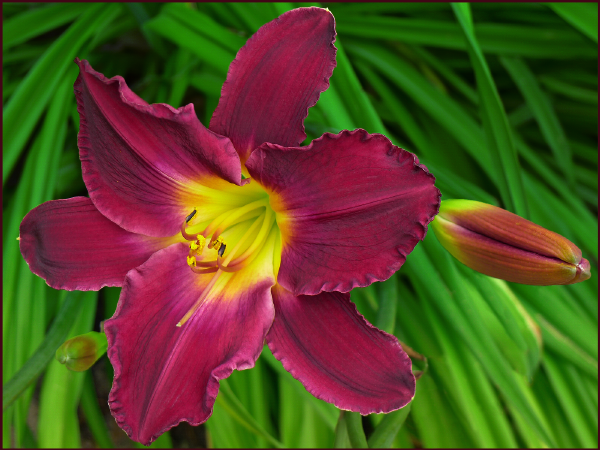

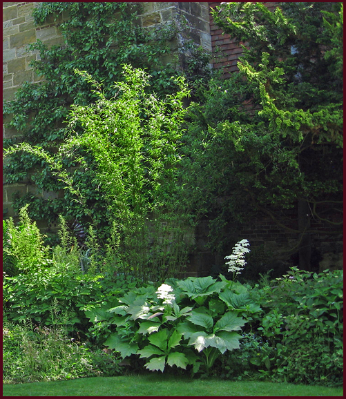
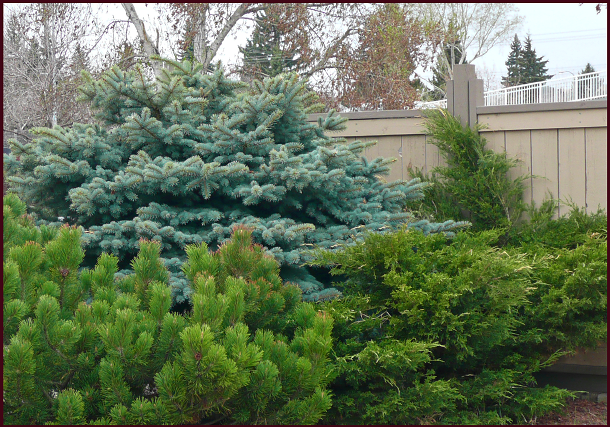
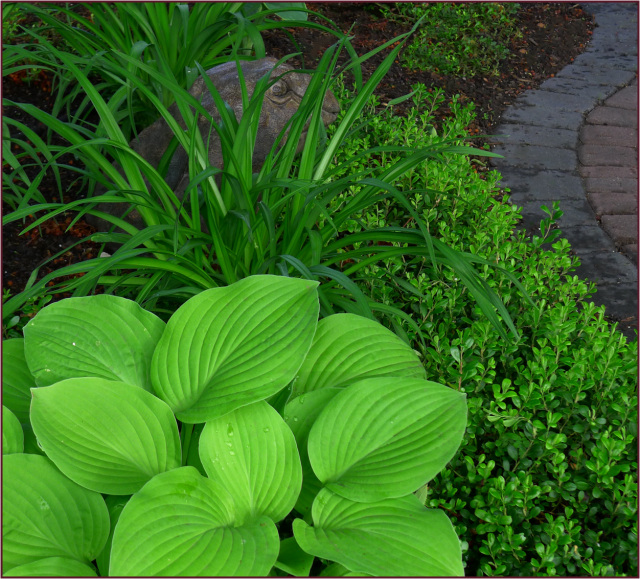


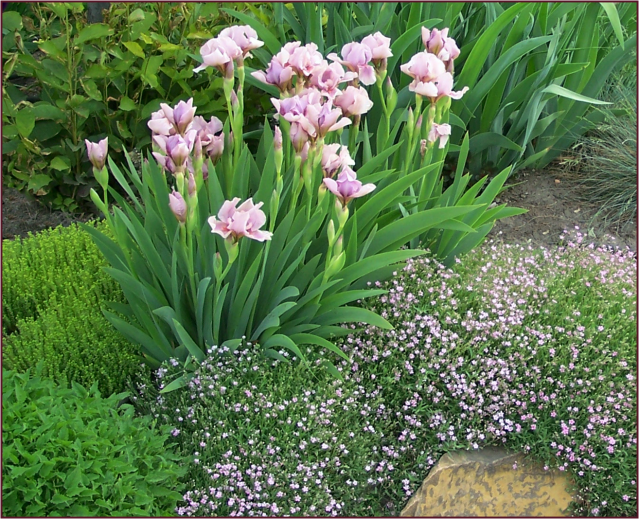


 Just a quick note to let y’all know my
Just a quick note to let y’all know my 